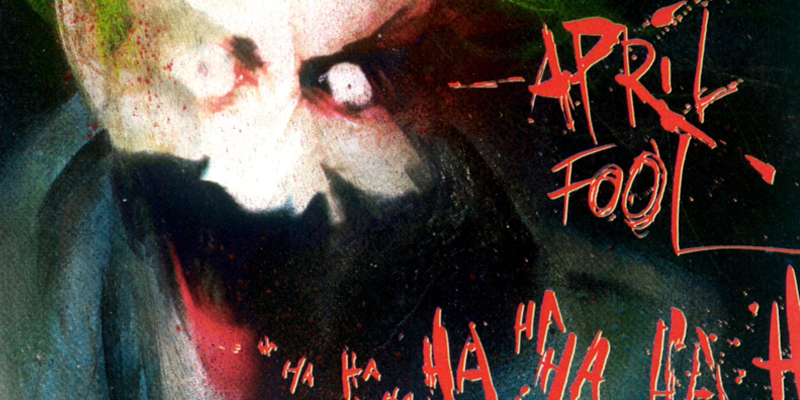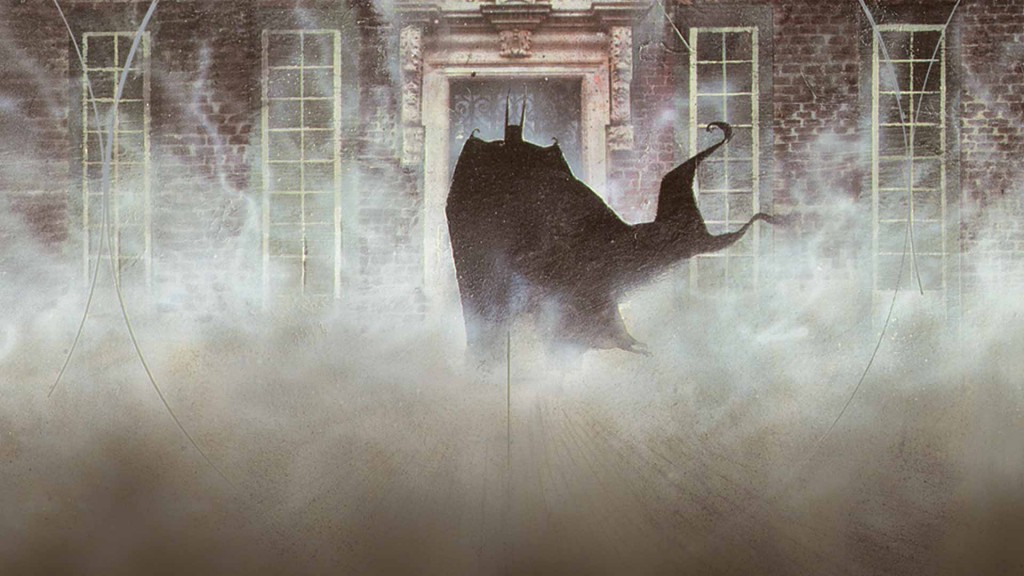Dark Was the Knight: Remembering Arkham Asylum
More than any other superhero-themed comic book property, Batman is intimately tied to the horror genre. Gothic horror in particular has always had an influence on the Dark Knight and the stylized world he inhabits. Many of the classic Batman villains could easily have found another life as stars of their own horror franchises. Several of them, like Two-Face, Man-Bat and even the Joker, have tragic origins and personalities that easily relate them to the likes of the Universal classic monsters such as Dracula, Frankenstein and the Wolf Man. Tim Burton was very much inspired by German Expressionist films like The Cabinet of Dr. Caligari and Nosferatu when he did his two Batman films—particularly the second—and the name of the asylum itself is even derived from the work of classic horror author H.P. Lovecraft.
Yet so few Batman stories over time have truly embraced these gothic horror roots. While the Dark Knight is still certainly dark, most writers who come to the material are influenced primarily by the hard-edged crime thrillers penned by Frank Miller or the Holmesian detective Neal Adams Batman when they get the chance to tell their own Batman stories. While recent writers like Scott Snyder have harkened back to horror, with arcs like the very Hannibal-esque Death of the Family, those roots are rarely well and truly embraced.
And then, of course, there’s Grant Morrison’s Arkham Asylum: A Serious House on Serious Earth. From beginning to end, this book is a work of pure psychological horror. The Joker is at his most spastic, most chaotic and unpredictable here. More than that, he’s getting inside Batman’s head. Considering the things the Joker does and the way he operates, he’s probably the last person you’d want examining your psyche. But that’s precisely what he does to Batman, in fact, it’s almost all he’s interested in doing. He doesn’t want to fight, he wants to talk, and that has always been something that both Bruce and the Batman are afraid of: talking. Connecting. Opening up.
Batman always has an extremely strong handle on himself, his emotions, his reactions to his surroundings and even the pain he allows himself to feel. He convinces himself that this is the way he needs to operate in order to do the things he needs to do. But there’s always an element of doubt buried deep below the surface and that is precisely the nerve that Morrison was looking to expose with Arkham Asylum.
Right at the beginning, to show not only the serious threat but the world of madness that Batman is about to step into, we are treated to a moment that is as terrifying as anything the Joker has done. Like the best horror films, we don’t actually see this happen. The Joker simply describes to Batman over the phone that he is sharpening a pencil and that he is about to drive it into a girl’s eye. The girl screams and Batman leaps into action. While he later discovers that she is fine, it does not make the moment itself any less unnerving. The opening perfectly sets up everything to follow. It starts off like a traditional Batman story, but we know it’s not. We’ve barely ever seen the Joker go that far in a comic before.
Stepping into Arkham Asylum is like stepping into another world. The main question posed by the book is whether or not Batman belongs out there in the city or trapped behind the walls of the asylum. What is it that separates Batman from his villains, exactly? It’s a point raised by The Killing Joke that Arkham Asylum expands on throughout its narrative. The Joker points out in The Killing Joke that Batman must have had a bad day once and it changed him fundamentally to make him do the things that he does, to turn him into the person he has become.
In Arkham Asylum, the Joker is now completely convinced that Batman is no better than he, or Harvey, or Crane or any of the rest. They need each other. They always have. The Joker suggests that Batman is drawn to Arkham because it is his home, drawn to these rogues because they are his true family. It’s not a huge stretch to think that Batman may identify with Harvey Dent in a way that he could never identify with Alfred, even as close as they are.
 Everything that the Joker says to Batman in Arkham Asylum is meant to push buttons, meant to push Batman over the edge because that’s exactly where he wants Batman to be. He has no end goal here, no master plan. He’s not going to kill a senator or poison the water supply, all he wants is for Batman to admit that this is where he belongs, and to stay.
Everything that the Joker says to Batman in Arkham Asylum is meant to push buttons, meant to push Batman over the edge because that’s exactly where he wants Batman to be. He has no end goal here, no master plan. He’s not going to kill a senator or poison the water supply, all he wants is for Batman to admit that this is where he belongs, and to stay.
The book, by and large, is focused on Batman’s greatest fear: that the Joker is right. There’s really nothing that Batman has ever been more afraid of than that. Because even though he would never admit it, the doubt is there. There’s a level of insanity to simply do what Batman does every night. He is always careful not to cross that line into madness, but how would he know if he actually had?
Morrison’s writing is completely complemented by Dave McKean’s art. The two go hand in hand. The artwork has as much of a level of insanity to it as the characters themselves. It’s chaotic. There are times when you can’t even be entirely sure what a panel is depicting, which makes it almost feel like you can’t trust this artist. It’s suggestive in some ways, much like the Joker’s persistent taunting of Batman. There are moments when you’re not sure if you’re looking at one character or another, but you ultimately see what you want to see. This visual style is aided and accentuated by a powerful color template of long, thick shadows and deep blues. It’s moody, dark, but not necessarily brooding. Batman is beyond brooding in Arkham Asylum. He’s not sitting on a rooftop mulling over his demons. Here, he’s truly terrified of them, suffocated by them, and is simply trying to claw his way out.
The best Batman stories not only challenge the character, but question him as well. They examine both who he is and why. Arkham Asylum does this as best as any of the all-time great Dark Knight tales. And, to me, it easily ranks among them. It’s a story where Batman is challenged by nearly all of his rogues and is forced to wonder if they are merely a reflection of himself, or if he is a reflection of them. To this day, it remains one of the best Batman stories ever told.

